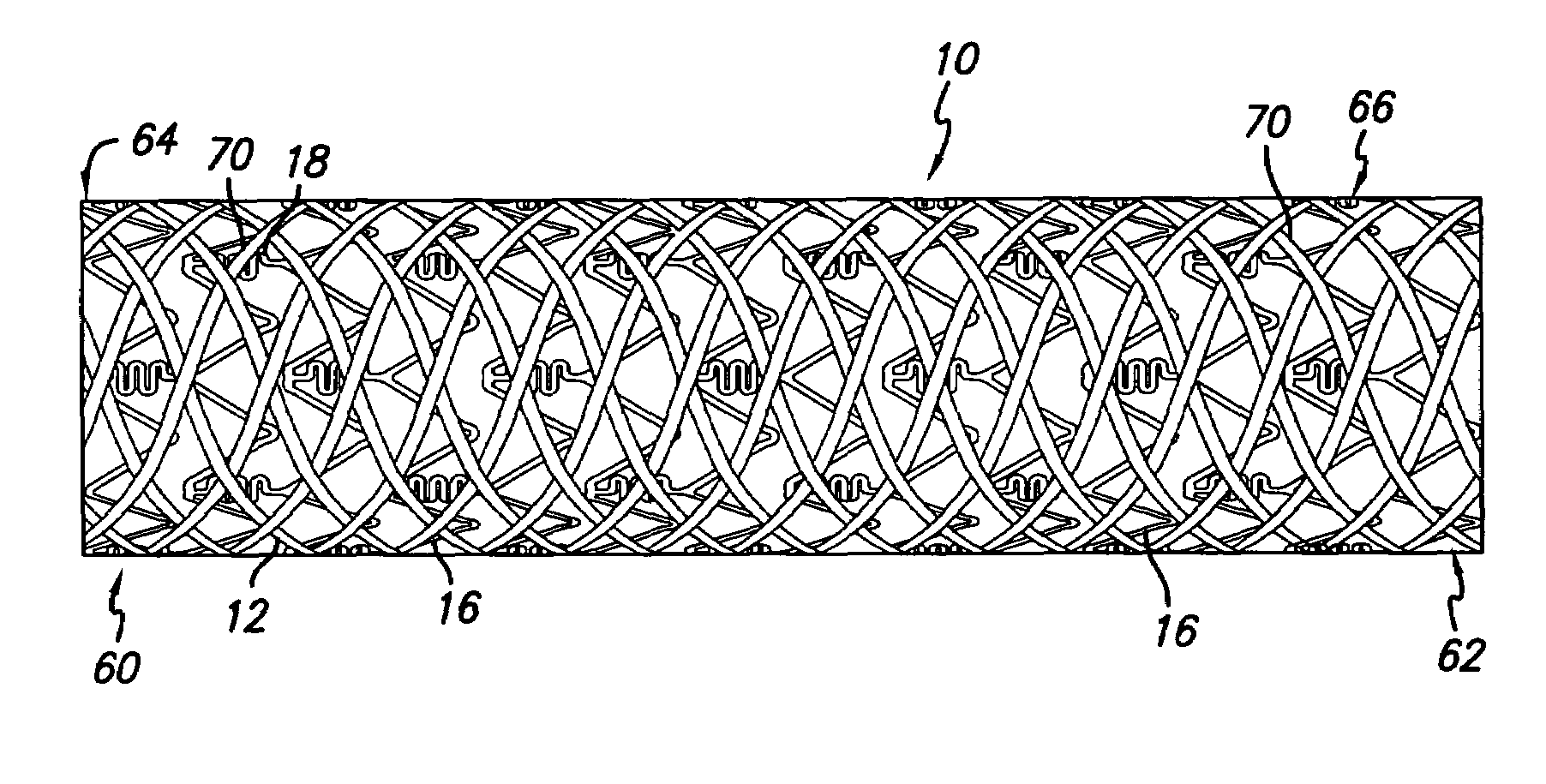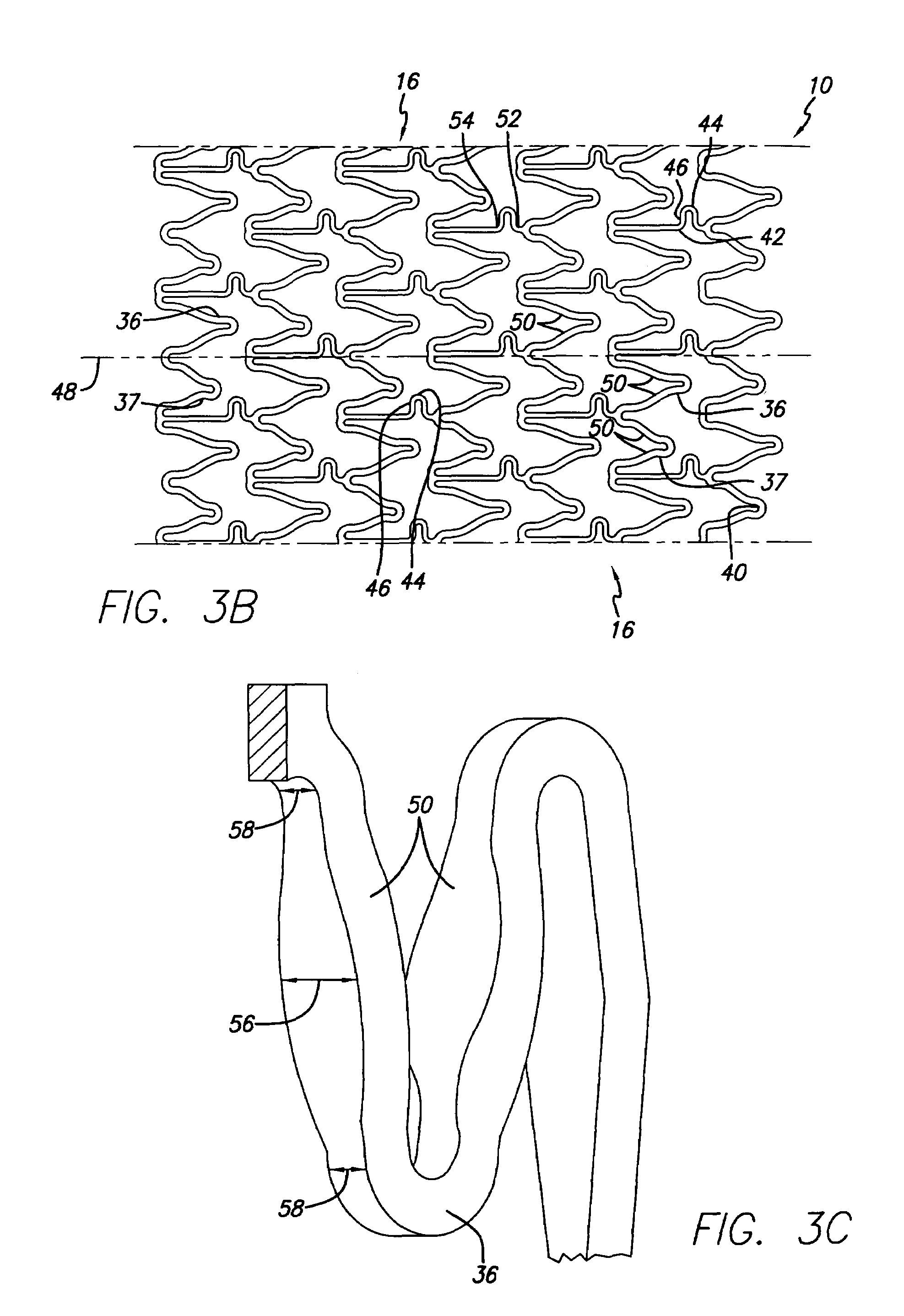Drug-eluting stent cover and method of use
a stent cover and drug-eluting technology, applied in the field of drugeluting and intravascular stents, can solve the problems of insufficient design and fabrication methods of drug-eluting stent devices, the potential of atherosclerotic plaque particles, and the inability to perform many procedures at once, so as to achieve the effect of easy expansion
- Summary
- Abstract
- Description
- Claims
- Application Information
AI Technical Summary
Benefits of technology
Problems solved by technology
Method used
Image
Examples
Embodiment Construction
[0042]As shown in the drawings for purposes of illustration, the present invention is directed to a drug-eluting stent delivery system which includes a mechanical component, the intravascular stent, and a drug-eluting component, a stent cover defining an eluting sheath fabricated from a mesh placed over the stent for controlled release of therapeutic drugs and for delivery of the therapeutic drugs in a localized drug therpay in a blood vessel. Also disclosed are methods of making a drug-eluting stent delivery system having a drug-eluting component disposed in the form of a prepatterned mesh with a web like pattern for controlled release and delivery of therapeutic drugs in localized drug therapy in a blood vessel.
[0043]Turning to the drawings, FIG. 1 depicts an embodiment of a metallic stent 10, coupled with an eluting sheath defined by a mesh stent cover 12, incorporating features of the invention, mounted on a catheter assembly 14 which is used to deliver the stent and implant it ...
PUM
 Login to View More
Login to View More Abstract
Description
Claims
Application Information
 Login to View More
Login to View More - R&D
- Intellectual Property
- Life Sciences
- Materials
- Tech Scout
- Unparalleled Data Quality
- Higher Quality Content
- 60% Fewer Hallucinations
Browse by: Latest US Patents, China's latest patents, Technical Efficacy Thesaurus, Application Domain, Technology Topic, Popular Technical Reports.
© 2025 PatSnap. All rights reserved.Legal|Privacy policy|Modern Slavery Act Transparency Statement|Sitemap|About US| Contact US: help@patsnap.com



